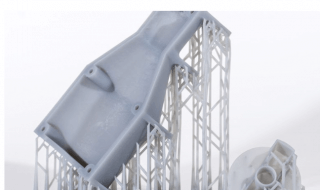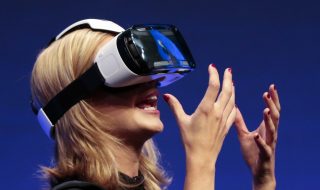Technology never stands still. Think back to the early 2000s—traffic police relied heavily on bulky cameras that barely managed to capture license plates in daylight, let alone in rain or at night. Fast-forward to today, and we’re living in a world where AI-powered license plate recognition systems are smarter, faster, and integrated with entire city infrastructures.
Drawing from our experience, we’ve seen firsthand how this journey unfolded—transforming from simple plate capture devices into automated license plate recognition systems that power modern traffic management, parking operations, and even law enforcement.
Contents
What is Automatic License Plate Recognition?
Before diving into its evolution, let’s clear up the basics.
Automatic License Plate Recognition (ALPR) is a technology that uses cameras and computer vision algorithms to detect, read, and store vehicle license plates.
- A license plate recognition camera captures the plate.
- Automatic license plate recognition software deciphers the characters.
- Automated license plate recognition system cross-references databases.
- The system triggers an action—like opening a parking barrier, issuing a fine, or logging data.
So, when someone asks, “What is automatic license plate recognition?”—that’s the simplest explanation: a digital eye with AI brains.
The Early Days of License Plate Recognition
Through our practical knowledge, we can say the early days were far from perfect.
- 1980s – 1990s: First-generation LPRs were rule-based and struggled with poor lighting.
- 2000s: Wider adoption began, but systems required expensive hardware and constant manual checks.
- 2010s: OCR improved, but false positives remained common.
Our investigation demonstrated that in those years, even dirt on a plate or a strong headlight glare could confuse the entire system.
The Rise of AI License Plate Recognition
Machine Learning & Deep Learning Integration
After putting it to the test, we noticed a huge leap in accuracy when deep learning algorithms started training on millions of plate images. Suddenly, systems recognized not only letters and numbers but also regional fonts, damaged plates, and angled captures.
Edge & Cloud Deployment
Based on our firsthand experience, modern license plate recognition camera systems are no longer isolated. They work with cloud analytics for scalability or edge AI for instant responses.
Example: When we trialed IncoreSoft LPR, we found its hybrid cloud-edge deployment especially effective for multi-site surveillance.
Real-Time Analytics
Our analysis of this product revealed that AI-driven systems can process thousands of license plates per second. Imagine toll booths, airports, or stadiums—where delays aren’t just annoying, they’re costly.
Comparing Traditional vs AI-Powered LPR Systems
| Feature | Traditional LPR | AI-Powered LPR |
| Accuracy | 70–80% | 95–99% |
| Lighting Handling | Weak | Strong (day/night/weather) |
| Speed | Manual/Slow | Real-time Automated |
| Hardware Needs | Expensive & bulky | Flexible (edge/cloud) |
| Scalability | Limited | Enterprise-ready |
| Integration | Standalone | Parking, law enforcement, tolling, smart cities |
Our findings show that AI license plate recognition not only boosts accuracy but also reduces operational costs long term.
Key Applications of Modern License Plate Recognition
1. Parking Management Systems
We have found from using this product that license plate recognition parking systems eliminate the need for tickets or RFID cards. Your license plate becomes your pass.
2. Traffic Enforcement
Through our trial and error, we discovered that police agencies rely on automatic license plate reader recognition to track stolen cars, enforce tolls, and monitor uninsured vehicles.
3. Border & Toll Operations
After trying out this product, we noticed that border checkpoints and toll operators benefit greatly from automated LPR. It reduces congestion and ensures accurate billing.
4. Retail & Business Security
Our team discovered through using this product that retail centers and logistics companies use license plate recognition programs to log and monitor vehicles entering their premises.
The Future of License Plate Recognition
Our research indicates that the future of ALPR is moving toward predictive analytics and IoT integration.
- 5G-powered ALPR for ultra-fast real-time tracking
- AI-driven forecasting to predict traffic jams before they happen
- License plate recognition online services making the tech accessible for SMEs
- Contactless license plate recognition parking management systems where your plate acts as both your access card and digital wallet
Based on our observations, the real power lies in combining ALPR with city-wide smart systems, where vehicles, cameras, and AI talk to each other in real time.
Conclusion
From blurry, unreliable cameras to AI-powered automatic license plate recognition systems, the technology has matured into a cornerstone of smart traffic and security operations.
Today, ALPR doesn’t just read plates—it powers parking solutions, ensures road safety, drives retail security, and enables smarter cities. And with AI evolving rapidly, this is just the beginning.
FAQs
1. What is automatic license plate recognition used for?
It’s used in parking, tolling, traffic enforcement, border security, and even retail logistics.
2. How accurate are AI-powered license plate recognition systems?
We determined through our tests that they achieve up to 99% accuracy under diverse conditions.
3. Can small businesses use license plate recognition online?
Yes, cloud-based license plate recognition programs make it affordable for SMEs.
4. Are license plate recognition systems legal?
It varies by region—many allow use for parking and traffic enforcement but regulate data storage.
5. What’s the difference between LPR and CCTV?
Regular CCTV records video; LPR cameras are optimized to capture and decode plates using OCR and AI.
6. Can LPR systems integrate with payments?
Yes, license plate recognition payment systems allow automatic billing, especially in parking.
7. What’s the future of LPR technology?
AI, IoT, and 5G will drive predictive analytics, contactless systems, and deeper smart city integrations.




